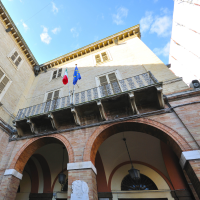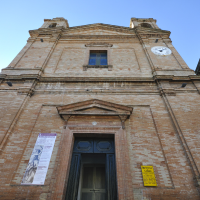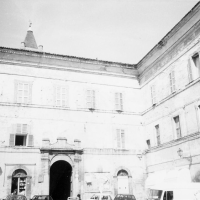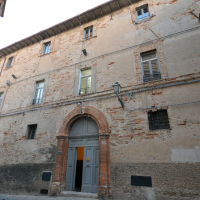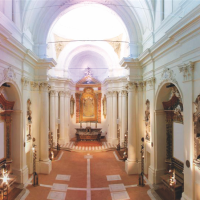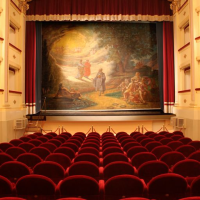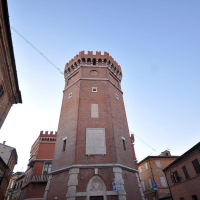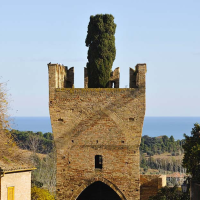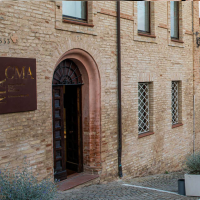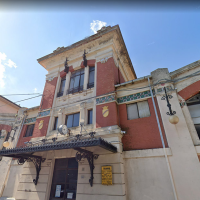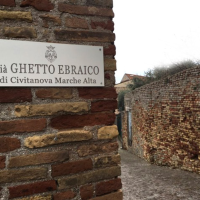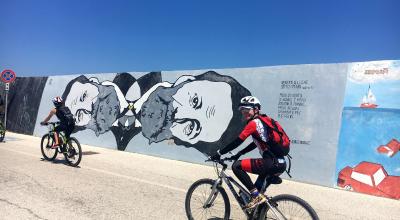Cliccando sul pulsante "Accetta tutti i cookie": l’utente accetta di memorizzare tutti i cookie sul suo dispositivo.
Cliccando su "Impostazioni cookie": l’utente sceglie le tipologie di cookie che saranno memorizzate nel suo dispositivo.
Arriving by car along Via Celeste, Civitanova Alta can be entered from the east through the 15th-century Sant’Angelo Gate or through Marina Gate, with a Cyprus tree growing from its battlements. Just inside is Piazza Garibaldi. Take Via Minniti, off which some narrow streets, “Vicolos” Della Fortuna, Della Luna, Dell’Aquila and Della Ginestra. Arriving in Piazza dell’Unità, straight ahead is Palazzo Donati. To the left, in Via Duca d’Aosta, is Palazzo Centofiorini, the residence of one of city’s leading aristocratic families from the 16th to 17th century, which has a beautiful early 16th-century doorway. Close by is Piazza della Libertà, from which enchanting narrow streets branch out, and also Corso Annibal Caro, which is the site of the homonymous historic 18th-century theatre, the Romanesque Gothic church of Sant’Agostino, now an Auditorium, and Annibal Caro’s house, now the site of the “Marco Moretti” Municipal Picture Gallery. Continuing onwards, you reach some characteristic narrow streets, “Vicolos” Del Pavone, Di Sant’Agostino, Della Notte and Bonaparte. The 17th-century Palazzo Conti is also in Corso Annibal Caro. Further ahead is Piazza della Vittoria, site of Vicus Cluentensis, the ancient Roman settlement, with its aqueduct tower, built in 1935 by the city Governor Pier Alberto Conti. Behind this, in Via Croce Santa, is the birthplace of the dancer and choreographer Enrico Cecchetti. From here you reach Via del Sole; after Via del Tramonto, and the little streets with redbrick houses, there is a staircase leading to Via della Tramvia. The rampart of the 15th-century Ponte Gate, also known as “Porta Mercato” (Market Gate), can still be seen here, as well as the Art Nuoveau-style Tramvia building, from 1910.
If you enter the upper town from the South, you pass under San Paolo Gate, also known as “Porta Zoppa” (Lame Gate), which, together with Marina Gate, has remained unchanged, unlike Girone Gate in the West and Porta Mercato in the North. There is a short route from here along Via Aurora, Vicolo Paolo Ricci and the nearby Vicolo dell’Arco, as far as Piazza della Libertà. The church of San Paolo Apostolo is here, as well as the Palazzo della Delegazione, and the church of San Francesco, now a multimedia centre, just opposite Palazzo Frisciotti-Bernardini. The late 16th-century Palazzo Ducale, with its beautiful brickwork doorway, can also be seen in the square. Retracing your steps, we recommend seeing Via Oberdan, which has various aristocratic buildings. Once you reach Marina Gate, on a clear day there is a splendid view over the green surrounding countryside, as far as Civitanova Porto and the blue sea beyond, providing a unique background for a beautiful photograph.
